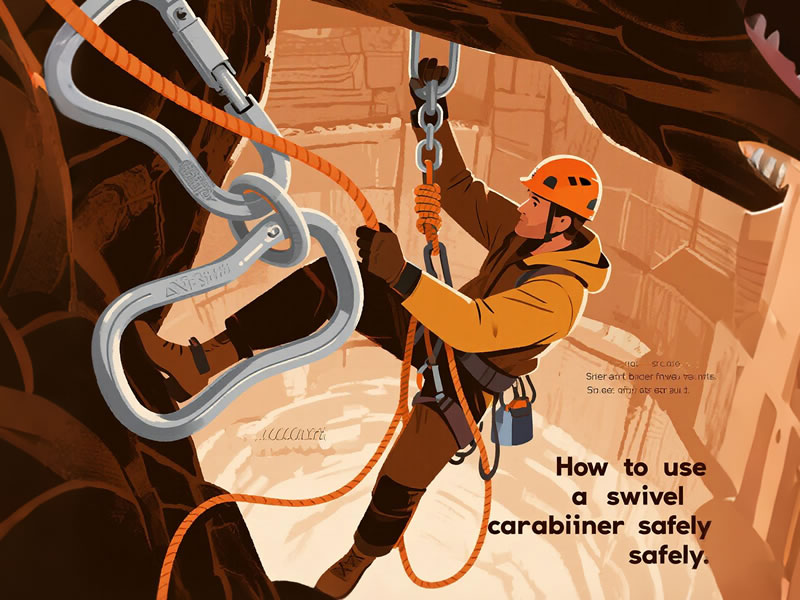How to use a swivel carabiner safely
Swivel carabiners are invaluable for preventing dangerous rope twists and reducing gear entanglement. However, their moving parts introduce unique risks if used incorrectly. Follow these critical safety protocols to harness their benefits without compromising security.

⚠️ Core Safety Principles
- Respect Load OrientationAlways load along the major axis (spine-to-gate). Cross-loading (force applied across the narrow side) reduces strength by 60-70% – a major cause of failures. Rotating joints increase cross-loading risk if components shift unexpectedly.
- Locking Mechanism Non-NegotiablesUse screwgate/twistlock/magnetic lock swivels for life-critical connections: belay devices, anchors, or personal tethers.Double-check closures: Swivel rotation can unscrew twist locks! Tape gate threads or use auto-locking models (e.g., Edelrid Maglock) for high-movement scenarios.Never rely on non-locking swivels for belays or top-rope anchors.
🔍 Critical Application-Specific Rules
At Belay Stations:
- Position swivels between anchor and belay device to prevent rope twists. Ensure the device’s orientation stays brake-hand accessible.
- Prevent cross-loading: Use two anchor points or a static sling to stabilize the carabiner if loaded dynamically.
On Quickdraws (Lead Climbing):
- Attach swivel ONLY to the rope-end: Bolt-end attachment risks cross-loading during falls.
- Verify gate clearance: Swiveling draws can rotate gates into rock edges. Use keylock models (e.g., DMM Phantom) to prevent snagging.
With Personal Safety Systems (PAS/Lanyards):
- Isolate swivels from direct anchor contact: Connect via a non-swivel carabiner to prevent unexpected rotation from compromising your position.
🛠️ Maintenance & Inspection Rituals
- Monthly Deep Clean:Flush swivel joints with water, then lubricate with dry silicone spray (avoid oil – attracts grit). Grit-jammed rotation causes sudden jerks that shock-load gear.
- Pre-Climb Checks:Rotation Test: Spin by hand – grinding or stiffness indicates internal damage.Gate Function: Ensure smooth operation under tension.Structural Integrity: Look for cracks near the swivel pin or spine.
- Retirement Signs:Visible corrosion on rotating surfaces1mm play in the swivel jointUIAA/CE certification illegible
❌ Deadly Misuses to Avoid
- Static Loading: Using swivels for fixed anchors (e.g., top-rope setups) where no rotation occurs. Standard carabiners are stronger and safer.
- Daisy-Chaining: Connecting multiple swivels multiplies failure points and cross-loading risk.
- Ignoring Minor Axis Limits: Swivels often have lower minor-axis strength (15-18kN vs. 22-25kN major). Never load sideways!
💎 Pro Tips for Maximum Safety
- Combine with a pulley: For haul systems or heavy loads, pair the swivel with a pulley to distribute rotational forces.
- Tape Screwgates: Wrap climbing tape around screwgate collars to prevent accidental unscrewing during rotation.
- Load Test New Setups: Before committing, apply bodyweight to verify the swivel’s final orientation under tension.
🔚 Final Verdict
Swivel carabiners solve critical problems but demand disciplined use. Always prioritize:
- Correct load orientation
- Certified locking mechanisms (UIAA/CE)
- Strategic placement only where rotation is essential
- Rigorous maintenance
When used intentionally – not as default gear – swivels become powerful safety tools. Pair these practices with manufacturer guidelines, and you’ll mitigate risks while enjoying tangle-free climbs.






